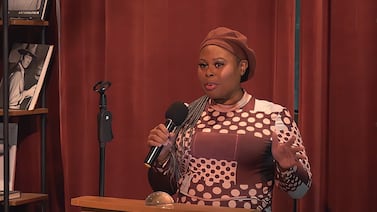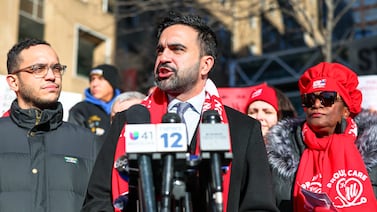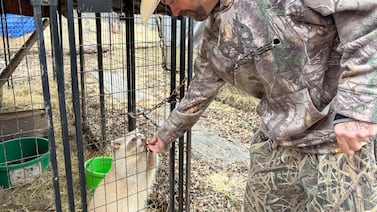Sign up for Your Local Epidemiologist New York and get Dr. Marisa Donnelly’s community public health forecast in your inbox a day early.
Welcome to the first edition of Your Local Epidemiologist New York.
These reports will provide essential information about public health issues in New York every week and tips on keeping yourself and your loved ones healthy — directly from me, an epidemiologist.

I’m Dr. Marisa Donnelly, Your Local Epidemiologist in New York. I have a PhD in epidemiology and have spent the past 10 years as a disease detective on the front lines — doing everything from investigating Covid-19 and mpox, to searching for the source of food poisoning (i.e., E. coli) outbreaks and researching mosquitoes that transmit viruses. When I’m not writing these reports or analyzing wastewater data (my day job), you can find me jogging or doting on my two cats 🐈🐈⬛.
Let’s kick things off with the State of Affairs — an infectious disease “weather report” for New Yorkers.
Covid-19: minimal
SARS-CoV-2 levels in wastewater, one of our best proxies for Covid-19 infections and spread throughout New York state, are “minimal.”
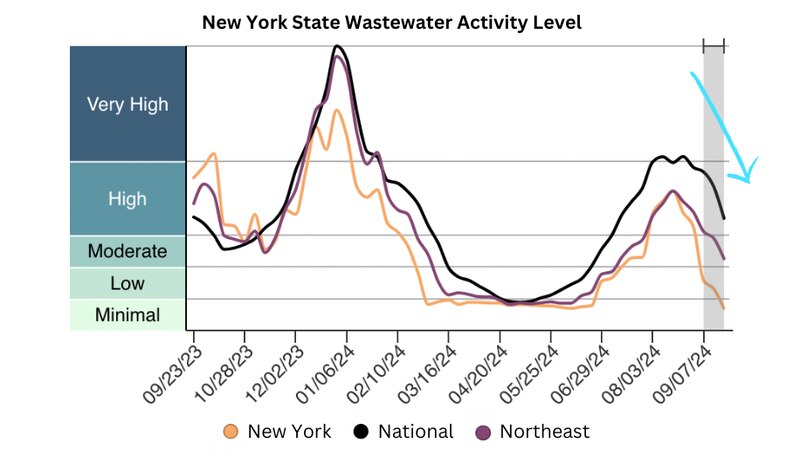
In more good news, severe Covid-19 disease remains low in New York City (2.0 per 100,000 people) and continues to decline. Hospitalizations in New York City are lower than the national average (2.3 per 100,000). These rates are so low because most New Yorkers have some sort of immunity, either through vaccination or prior infections.
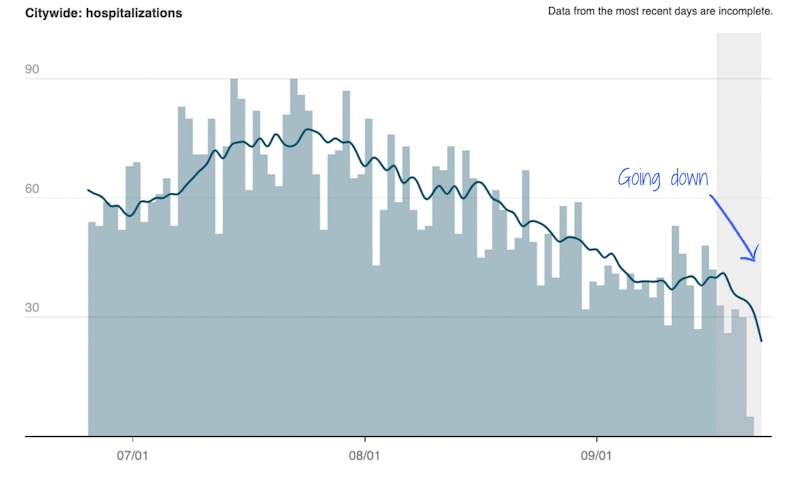
Most New Yorkers getting hospitalized for Covid-19 are those over 65 years old.
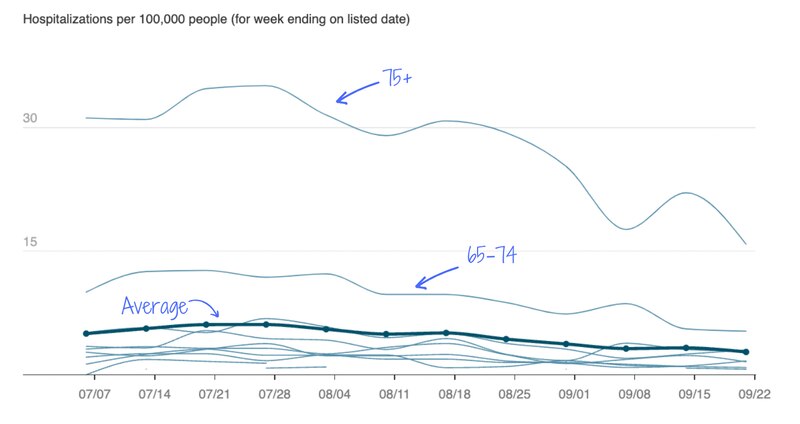
Influenza and RSV: minimal (we assume), but increasing
New York typically begins releasing influenza and RSV data in October, marking the “official” start of the respiratory season. Although they haven’t posted any updates for this season yet, I expect the data to be available later this month.
Right now, we assume levels are low for three reasons:
- Wastewater data can also detect flu and RSV, and activity for New York is low.
- Testing data for New York shows that the percent of tests positive for influenza, RSV, rhinovirus, or enteroviruses are low, but starting to show some increases.
- Influenza-like illness (ILI) — a physician tally of coughs, sore throats, and fevers — is minimal. (You’ll notice that New York and other states in the east and south are starting to change colors other than dark green. This indicates that seasonal flu activity is just beginning.)
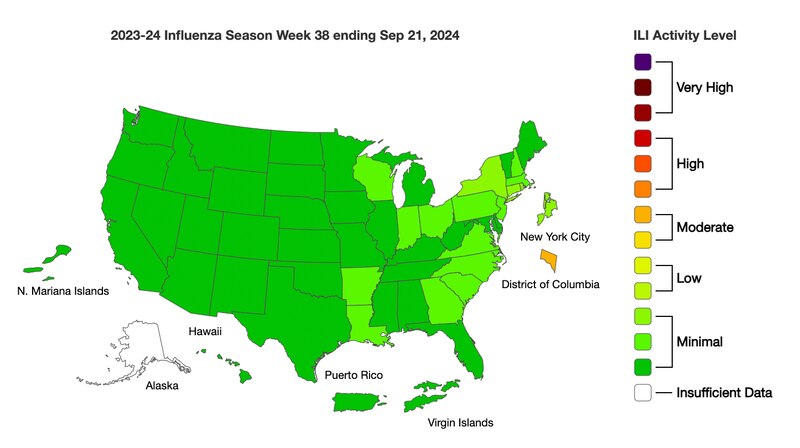
This may be a great time to get your fall vaccines. Ideally, we want to get these before respiratory waves start, as they are a prevention tool.
- Updated Covid-19 vaccines are now available for free throughout New York City; find locations here. Vaccination locations throughout the rest of New York state can be found here.
- For those without insurance or whose insurance does not cover the Covid-19 vaccine, the New York State Vaccines for Adults Program provides vaccines at no cost to eligible adults throughout the state; find more info here.
Mpox (monkeypox): Clade II present in NYC
Mpox — formally known as monkeypox—is an infectious disease spread through very close contact, like sex. New York City has one of the highest case counts this year, with more than 350 cases. In the past month, 38 cases have been detected in the city. As shown in the graph below, this year has been worse than last.
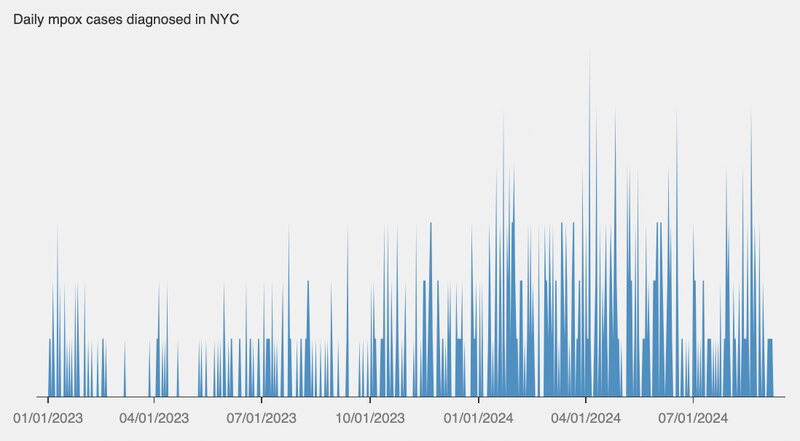
You may also be hearing about mpox in Africa in the news. But, keep in mind there are two types of mpox:
- Clade I is causing an emergency in Central Africa and seems to be causing more severe disease. However, it has yet to be detected in the United States (or New York).
- Clade II caused a massive outbreak in 2022 and has stuck around at endemic levels since. Severe disease is rare, but regardless, infection can be painful. In New York, we only have Clade II cases at this time.
Fortunately, the JYNNEOS vaccine provides protection, but be sure to get both doses. Who is eligible?
- Men who have sex with men
- People who identify as trans, nonbinary, genderqueer, or gender non-conforming.
Find mpox vaccination locations here.
Bottom line
Respiratory diseases are low, giving us a bit of a break before picking up again due to social networks changing (students going to school, holiday gatherings) and the weather cooling.
Mpox is still lingering around New York. There’s a lot we can do to stay healthy though: Stay up to date on your vaccines!
Love,
Your Local Epidemiologist
Dr. Marisa Donnelly, a senior epidemiologist with wastewater surveillance firm Biobot Analytics, has worked in applied public health for over a decade, specializing in infectious diseases and emerging public health threats. She holds a PhD in epidemiology, and has led multiple outbreak investigations, including at the California Department of Public Health and as an epidemic intelligence service officer at the Centers for Disease Control and Prevention. Marisa has conducted research in Peru, focusing on dengue and Zika viruses, as well as the mosquitoes that spread them. She is Healthbeat’s contributing epidemiologist for New York in partnership with Your Local Epidemiologist, a Healthbeat supporter.



